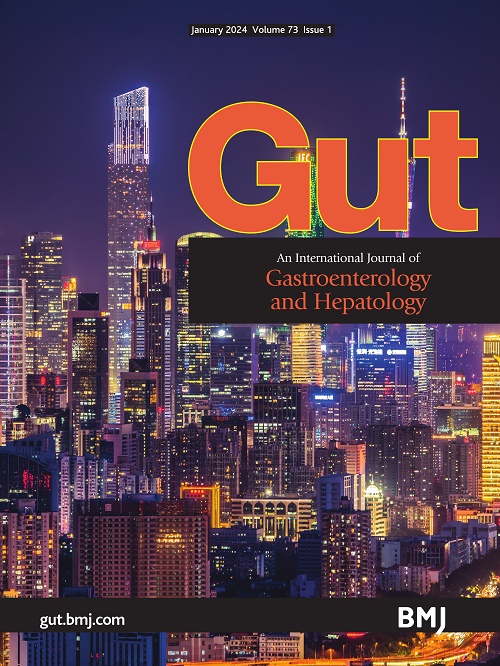Combining faecal haemoglobin, iron deficiency anaemia status and age can improve colorectal cancer risk prediction in patients attending primary care with bowel symptoms: a retrospective observational study
IF 23
1区 医学
Q1 GASTROENTEROLOGY & HEPATOLOGY
引用次数: 0
Abstract
Background In primary care, National Institute for Health and Care Excellence suspected cancer guidelines recommend measuring faecal haemoglobin (f-Hb) if colorectal cancer (CRC) is suspected, with a referral threshold of ≥10 µg Hb/g faeces defining a 3% risk, but most have a normal colonoscopy. Objective Examine whether combining f-Hb, patient age and iron-deficient anaemia (IDA) status improves risk prediction. Design Retrospective single-centre observational study of symptomatic patients who submitted contemporaneous f-Hb and full blood count (FBC) samples between December 2015 and December 2019. f-Hb was estimated using HM-JACKarc (Hitachi Chemical Diagnostics Systems). Patients were categorised by presence/absence of IDA. Incident CRC was identified via record linkage to the Scottish Cancer Registry. Kaplan-Meier estimates determined cumulative 1-year CRC risk by patient age, f-Hb result and presence of IDA. Results Of 34 647 valid f-Hb results retrieved; 7889 (22.8%) had f-Hb≥10 µg Hb/g. Of these, 33 285 samples (96.1%) had associated FBC results of which 3000 (9.0%) had IDA. Overall, 571 incident CRC were recorded. The risk of CRC breached 3% in patients with f-Hb>99 µg Hb/g aged >40 years and reached 30% (19.4–41.0) with f-Hb>99 µg Hb/g in age >55 years plus IDA. 2029 f-Hb results (25.7%) were in the 10–19 µg Hb/g range of which 27 (1.3%) had CRC. In this subgroup, CRC risk did not exceed 3% in patients <85 years and no IDA. Conclusion Combining f-Hb, patient age and IDA status improves CRC risk prediction, identifies a low-risk group with f-Hb<20 µg Hb/g and no IDA and could inform revised referral guidance. Data are available upon reasonable request. Data are available on request.求助全文
约1分钟内获得全文
求助全文
来源期刊

Gut
医学-胃肠肝病学
CiteScore
45.70
自引率
2.40%
发文量
284
审稿时长
1.5 months
期刊介绍:
Gut is a renowned international journal specializing in gastroenterology and hepatology, known for its high-quality clinical research covering the alimentary tract, liver, biliary tree, and pancreas. It offers authoritative and current coverage across all aspects of gastroenterology and hepatology, featuring articles on emerging disease mechanisms and innovative diagnostic and therapeutic approaches authored by leading experts.
As the flagship journal of BMJ's gastroenterology portfolio, Gut is accompanied by two companion journals: Frontline Gastroenterology, focusing on education and practice-oriented papers, and BMJ Open Gastroenterology for open access original research.
 求助内容:
求助内容: 应助结果提醒方式:
应助结果提醒方式:


